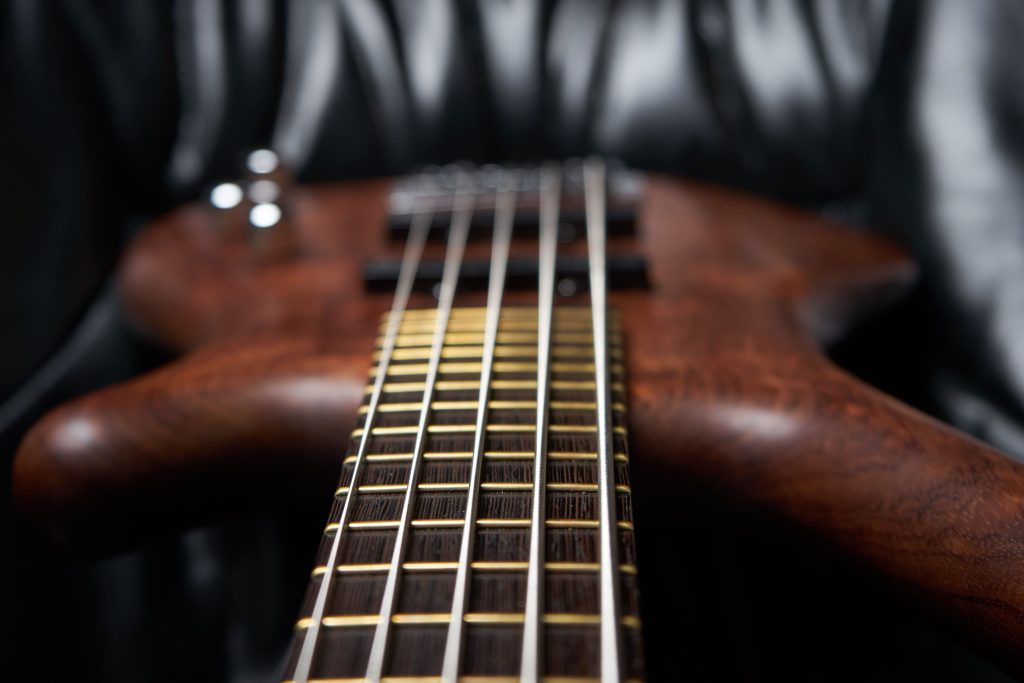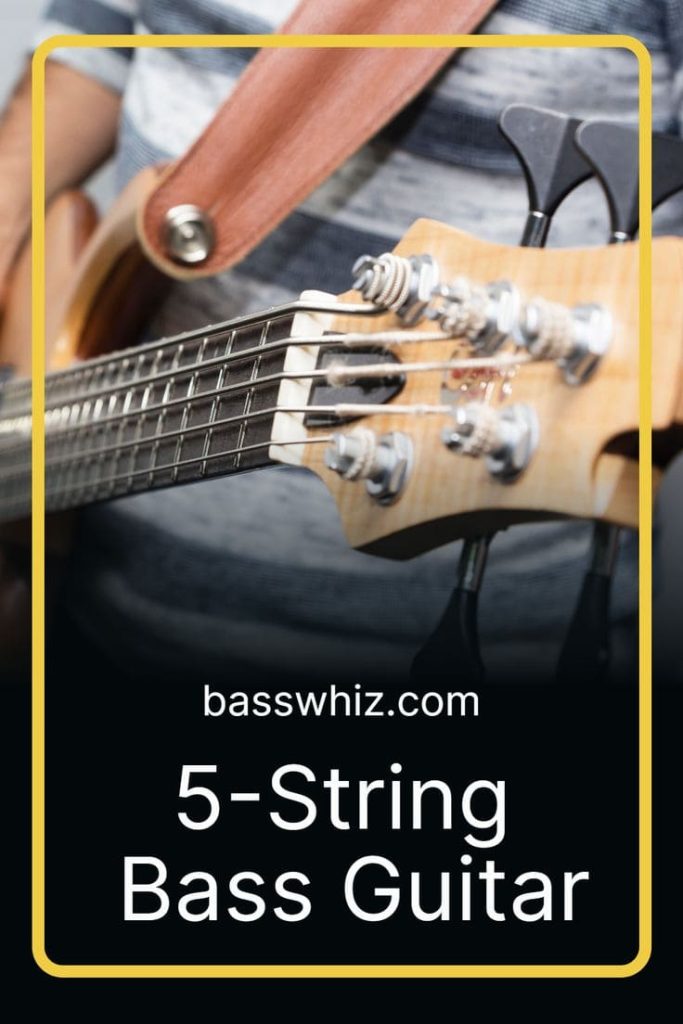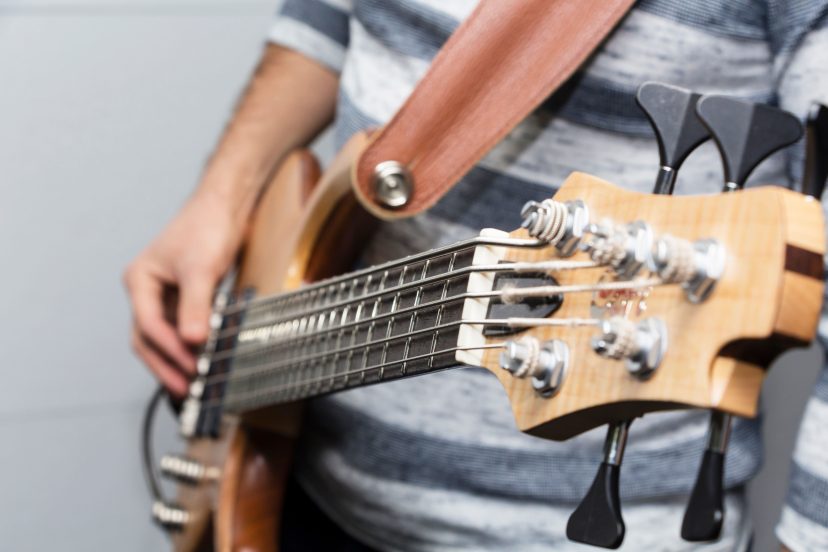5-String Bass Guitar
Introduction to the 5-String Bass Guitar
Let’s explore the world of 5-string basses, which offer a broader range of notes, new playing techniques, and the ability to explore genres beyond what a standard 4-string bass allows. You’re probably curious about diving deeper into the realm of bass guitars, specifically the 5-string variety. Their popularity has increased greatly over the past decade or more.
Why Choose a 5-String Bass Guitar?
Extended Range: The most obvious advantage of a 5-string bass is the extended range it offers. That extra low B string opens up new musical territories, allowing for deeper grooves and more complex lines.
Versatility in Genres: From jazz fusion to heavy metal, the 5-string bass finds its place across various music genres. Its extended range provides the flexibility needed to cover a wide array of songs and styles.
The Benefit of a Low B String: The low B string adds depth to your playing, enabling you to hit notes that were once out of reach. It’s a game-changer for both writing and performing, offering a new dimension to your music.
Understanding the Basics of a 5-String Bass
Anatomy of a 5-String Bass: Getting familiar with the anatomy of your 5-string bass is crucial. From its wider neck to the string spacing, there’s a lot to get accustomed to, especially if you’re transitioning from a 4-string bass.
Tuning Your 5-String Bass: Standard tuning for a 5-string is B-E-A-D-G. This tuning expands your range significantly, giving you access to both lower and higher notes.
Transitioning from 4 Strings to 5: If you’re moving up from a 4-string, the transition might feel daunting at first. But with practice, the 5-string bass will feel just as comfortable, if not more so.
Playing Techniques for 5-String Bass Guitar
The addition of a fifth string not only expands your musical range but also opens up new playing techniques and challenges. Here’s how to tackle them:
Right-Hand Technique: Your plucking hand will need to adapt to the wider string spacing. Practicing scales and arpeggios can help your right hand become more agile and comfortable moving across the strings.
Left-Hand Technique: The wider neck of a 5-string bass demands more from your fretting hand. Stretching exercises and chord shapes practice can enhance your left-hand flexibility and strength.
Slapping and Popping on 5 Strings: Slap bass techniques take on a new dimension with the 5-string bass. The low B string can add a beefier sound to slap lines, though it requires a bit more precision to avoid muddy tones.
Choosing Your First 5-String Bass
Selecting your first 5-string bass can be as exciting as it is overwhelming. Here’s what to keep in mind:
Factors to Consider: Look at the build quality, neck comfort, electronics, and, of course, the sound. A good setup is crucial, especially for a 5-string, to ensure playability and tonal clarity.
Budget Options: There are some fantastic budget-friendly options that don’t skimp on quality. Brands like Ibanez and Squier offer models that are great for beginners without breaking the bank.
Mid-Range Models: For those looking to invest a bit more, mid-range models from brands like Fender and Yamaha provide a good balance between quality and price.
High-End Picks: If you’re ready to splurge on a top-tier instrument, brands like Music Man and Warwick offer professional-grade basses that can satisfy even the most discerning players.

5-String Basses to Consider
Here are the top 5 five-string bass guitars along with their descriptions and model information:
1. Fender American Ultra Jazz Bass V
Description: The Fender American Ultra Jazz Bass V is a high-end model designed for professional musicians. It features advanced electronics and a versatile sound that makes it suitable for a wide range of music genres.
Model Information:
- Body: Alder
- Neck: Maple with Modern “D” profile
- Fingerboard: Rosewood or Maple
- Pickups: Ultra Noiseless Vintage Jazz Bass V single-coils
- Bridge: High-mass, vintage-style bridge
- Controls: Volume, Pan, Treble, Midrange, Bass, Active/Passive switch
- Finish: Various options including Ultraburst, Arctic Pearl, Mocha Burst
2. Music Man StingRay 5 Special
Description: The Music Man StingRay 5 Special is renowned for its punchy tone and robust build quality. It’s a favorite among rock, funk, and pop bassists.
Model Information:
- Body: Select hardwood
- Neck: Roasted maple with special sculpted neck joint
- Fingerboard: Maple or Rosewood
- Pickups: Neodymium humbucking
- Bridge: Music Man Modern Classic with stainless steel saddles
- Controls: 3-band active preamp, volume, treble, mid, bass
- Finish: Various options including Jet Black, Cruz Teal, Charging Green
3. Ibanez BTB745
Description: The Ibanez BTB745 offers exceptional playability and a wide tonal range, making it ideal for modern bass players who require versatility and precision.
Model Information:
- Body: Ash wing body with walnut top
- Neck: 5-piece maple/walnut neck-through design
- Fingerboard: Rosewood
- Pickups: Bartolini BH2 dual-coil pickups
- Bridge: MR5S bridge
- Controls: 3-band EQ, volume, balancer, mid frequency switch
- Finish: Transparent Gray Flat, Deep Twilight Flat
4. Yamaha TRBX605FM
Description: The Yamaha TRBX605FM combines sleek design with powerful sound. It features a flamed maple top and a versatile preamp that provides a broad range of tonal options.
Model Information:
- Body: Alder with flamed maple top
- Neck: 5-piece maple/mahogany
- Fingerboard: Rosewood
- Pickups: YGD H5 Alnico V humbuckers
- Bridge: Die-cast bridge
- Controls: 3-band active EQ, volume, pickup balancer, active/passive switch
- Finish: Natural Satin, Translucent Black, Dark Red Burst
5. Spector Euro5 LX
Description: The Spector Euro5 LX is a premium bass guitar known for its deep, rich tone and superior craftsmanship. It’s a go-to for many professional bassists in various genres.
Model Information:
- Body: Alder with a maple top and walnut veneer
- Neck: 3-piece maple with graphite rods
- Fingerboard: Rosewood or Ebony
- Pickups: EMG 40DC active pickups
- Bridge: Spector locking bridge
- Controls: Volume, blend, bass, treble
- Finish: Various options including Black Cherry, Blue Stain, Natural
These five-string bass guitars are among the top choices for musicians due to their build quality, sound versatility, and reliable performance.
Must-Have Accessories
To get the most out of your 5-string bass, you’ll need a few essential accessories:
Amplification Needs: Ensure your amp can handle the low B string without losing clarity. A good EQ and powerful speaker are key.
Effects Pedals: Explore pedals that enhance the unique qualities of a 5-string bass, like octave pedals for extending your range even further or overdrive for adding some grit to your tone.
Maintenance Tools: A set of Allen wrenches for truss rod adjustments, a good tuner, and cleaning supplies will keep your bass in top condition.
With the right approach to learning and the proper gear, you’ll find that the extra string adds a rich new layer to your playing, whether you’re grooving in a tight rhythm section or taking the lead with melodic solos. Embrace the challenge, and you’ll soon discover the vast sonic landscapes that await in the realm of the 5-string bass.
Practicing and Improving on the 5-String
Moving beyond the basics, developing your skills on a 5-string bass involves targeted practice and a keen sense of musical exploration:
Recommended Exercises: Start with scales and arpeggios that span all five strings to get comfortable with the extended range. Incorporate rhythm exercises to improve timing and feel, especially important for grooving with the low B string.
Playing Along with Tracks: One of the best ways to improve is by playing along with your favorite songs or backing tracks. This not only hones your timing and groove but also helps in understanding how the 5-string bass fits within different musical contexts.
Exploring Different Genres: The 5-string bass guitar shines across many genres, from metal to jazz to gospel. Diving into different musical styles can broaden your playing techniques and sonic palette.
Famous 5-String Bass Players and Their Techniques
Learning from the masters can provide invaluable insights into the versatility and expressive power of the 5-string bass:
Player Profiles:
- John Myung (Dream Theater): A master of technical proficiency and complex compositions, Myung’s use of a 5-string bass in progressive metal showcases its capabilities in intricate musical settings.
- Victor Wooten (Béla Fleck and the Flecktones): Known for his innovative slap technique and melodic playing, Wooten has expanded the horizons of what a bassist can achieve with a 5-string.
- Les Claypool (Primus): With a highly original style that blends slap bass, tapping, and flamenco-like strumming, Claypool’s work illustrates the quirky potential of the 5-string bass.
Learning from the Legends: Analyze their music, study their techniques, and try to incorporate some of their approaches into your playing. Many of these players offer workshops, books, and videos detailing their methods.
5-String Bass in the Studio and On Stage
Whether recording in the studio or performing live, the 5-string bass requires special consideration to shine:
Recording Tips: When recording, clarity is key. Use fresh strings and consider a direct input (DI) box to capture the full range of your bass cleanly. Experiment with microphone placements if using an amp to find the sweet spot that best represents your tone.
Live Performance Setup: Onstage, ensuring your low B is heard without overwhelming the mix is crucial. A powerful amplifier and speaker setup that can handle low frequencies with definition will make a difference. Also, consider wireless systems and pedalboards that allow you to move freely and adjust your sound on the fly.
Picking up the 5-string bass means embarking on a musical adventure that challenges and rewards in equal measure. With dedication, practice, and a willingness to explore, you’ll unlock new creative potential and deepen your connection to the music you love. Remember, it’s not just about playing more notes; it’s about expressing more of what’s inside you through the broader palette the 5-string bass provides.

Conclusion: Is a 5-String Bass Right for You?
Deciding to add a 5-string bass to your arsenal is a significant step in any bassist’s journey. It challenges your technique, broadens your musical vocabulary, and offers a deeper sonic range. Whether you’re a beginner intrigued by the extended range or a seasoned player seeking to expand your musical horizons, the 5-string bass is a versatile and rewarding instrument that opens up new possibilities for expression and creativity. Dive in, practice diligently, and let it roll.
FAQs
- Is a 5-string bass harder to play than a 4-string?
- Initially, the wider neck and additional string can be challenging, but with practice, many find it as comfortable as a 4-string, offering more musical options.
- Can I play genres other than metal on a 5-string bass?
- Absolutely! The 5-string bass is versatile enough for any genre, from jazz to funk to gospel, providing a wider range and richer sound palette.
- What should I look for when buying my first 5-string bass?
- Consider the instrument’s playability, comfort, build quality, and sound. It’s also important to think about how it fits with the style of music you want to play.
- How do I transition from a 4-string to a 5-string bass?
- Start by getting familiar with the extended range. Practice scales and songs you already know, gradually incorporating the low B string to expand your playing.
- Are there specific amps or pedals recommended for a 5-string bass?
- Look for amps and pedals that handle low frequencies well. EQ pedals, compressors




